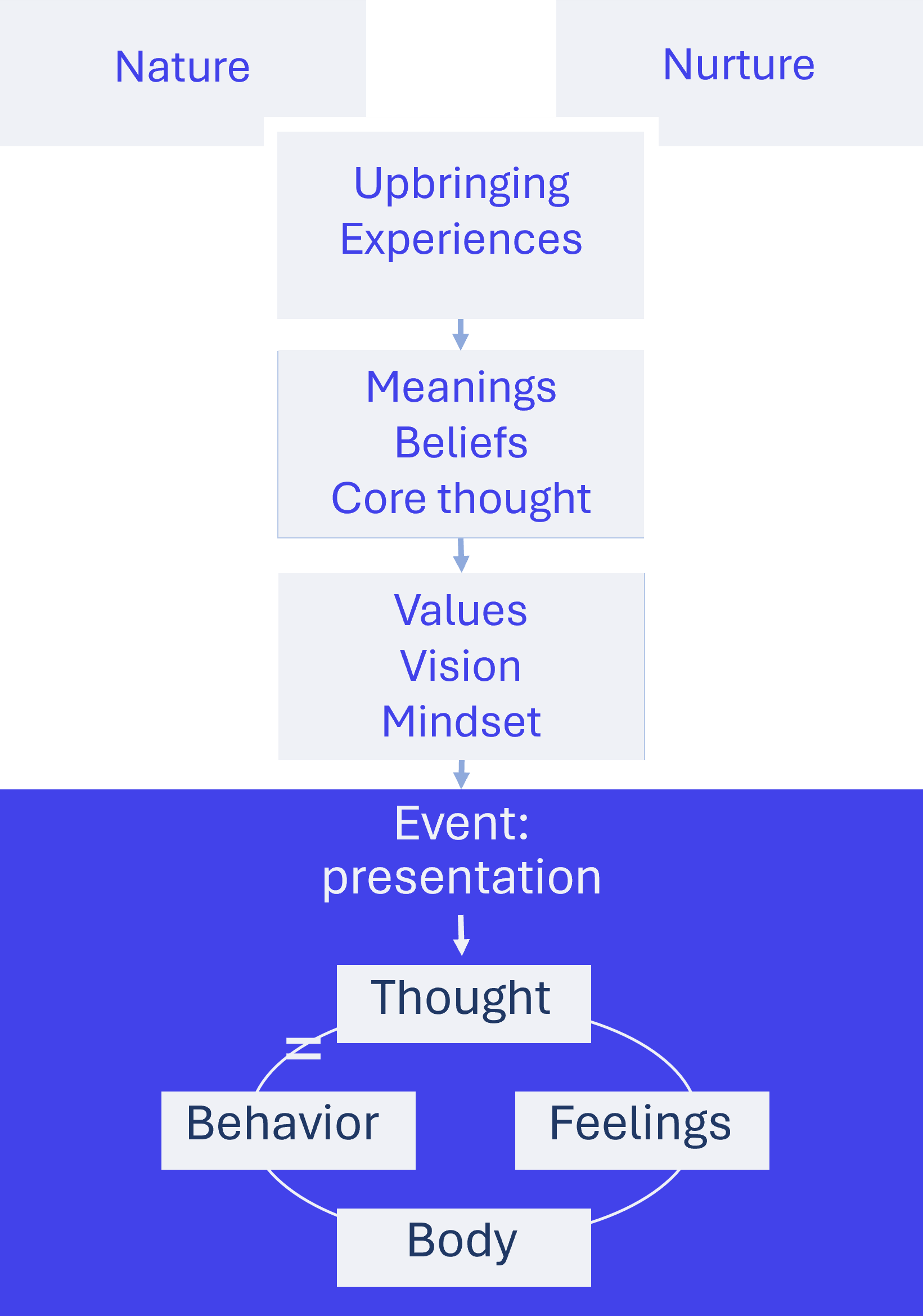In module 1, you have been working on your strategy. Module 2 was all about the presentation. Both are essential parts of your preparation. However, a perfect preparation can only be completed by a convincing performance. The most important selling point is a demonstration of genuine enthusiasm during the interview. But, how can you be enthusiastic and authentic during a stressful event such as a grant interview? Stress diminishes your working memory and therefore it makes your memory (the place where all your knowledge is stored) less accessible. Let us have a look at how this works and what you can do about it.
What happens inside
You know what a good delivery looks like from the outside. Use of voice and body language make or break a presentation. If applied well, these non-verbal aspects can make an online presentation an engaging experience. Genuine enthusiasm is contagious. It looks simple from the outside, but when you are asked to do it, if you are like most people, it is much less so. Being your convincing self with so much at stake is challenging. Social stress disconnects you from yourself and your audience. If you want to overcome this, it helps to first understand what happens inside and then train yourself in dealing with it. After all, what happens on the outside is a manifestation of what happens inside. If you are able to connect with yourself and your enthusiasm, then you are also able to connect with your audience.
The model on the right, derived from cognitive behavioural therapy (CBT), can be useful here. The stress of the interview triggers what is called a negative core cognition. It is an automatic judgment about yourself rooted in your life history and genetical makeup. ‘I am not good enough,’ is an often heart example. This thought leads to a feeling. Usually it is anxiety, but it can also be anger, loneliness, or sadness. This feeling triggers a series of physical stress reactions that prepare you for an evolutionary adequate response to the stressor: fighting, freezing, flighting. Finally you display behaviour to reassure yourself. For instance, you speed up to let the unpleasant situation end sooner. And, this could lead to another negative judgement: ‘I am doing it again…’
The model helps to understand why we do what we do. It also provides concepts to focus on while learning how to stop with behaviours that are dysfunctional in the interview setting. Here we discuss those parts that are, given the interview setting, the most effective training handles.

Textframe: Dealing with negative thought and feelings
On the thought level, be conscious of your own negative assumptions about the upcoming interview. ‘I have to be somebody else’, or: ‘I am shy’ are examples of such negative assumptions. Nine out of ten of these assumptions are not realistic. As soon as you are aware of them, you can falsify them and confront them with true alternative thoughts. For instance: ‘I am okay as I am and I want to learn something’. ‘I am well prepared’ (another reason to take preparation very seriously). Or: ‘I’ll survive’. Regarding feelings, it is a matter of interpreting and accepting your feelings. Feelings have an evolutionary life-saving function. It is perfectly natural to feel something in a social stressful situation. Denying feelings never help.
Part of the stress response to the interview setting and what is at stake are feelings. Feelings attend us what is important for us. Anger tells us to guard our borders. Fear tells us to be cautious. Loneliness attends us to being with another person. Disgust prevents us from eating rotten meat. We have the propensity to keep nasty feelings away. If that does not work, we can be overwhelmed by them. The best thing you can do is to acknowledge your feelings. This does not mean to run after them, or ignore or deny them. Be conscious of them. Do or do not do something with them, and evaluate for the next time.
Sometimes it is necessary to dig deeper in the roots of core cognitions and feelings. Then it is advisable to seek specialized support. However, it is our experience that most candidates benefit from the other two parts of the CBT cycle: body and behaviour. In this step we discuss body. Behaviour will be discussed in the relevant contexts of presenting and answering questions.